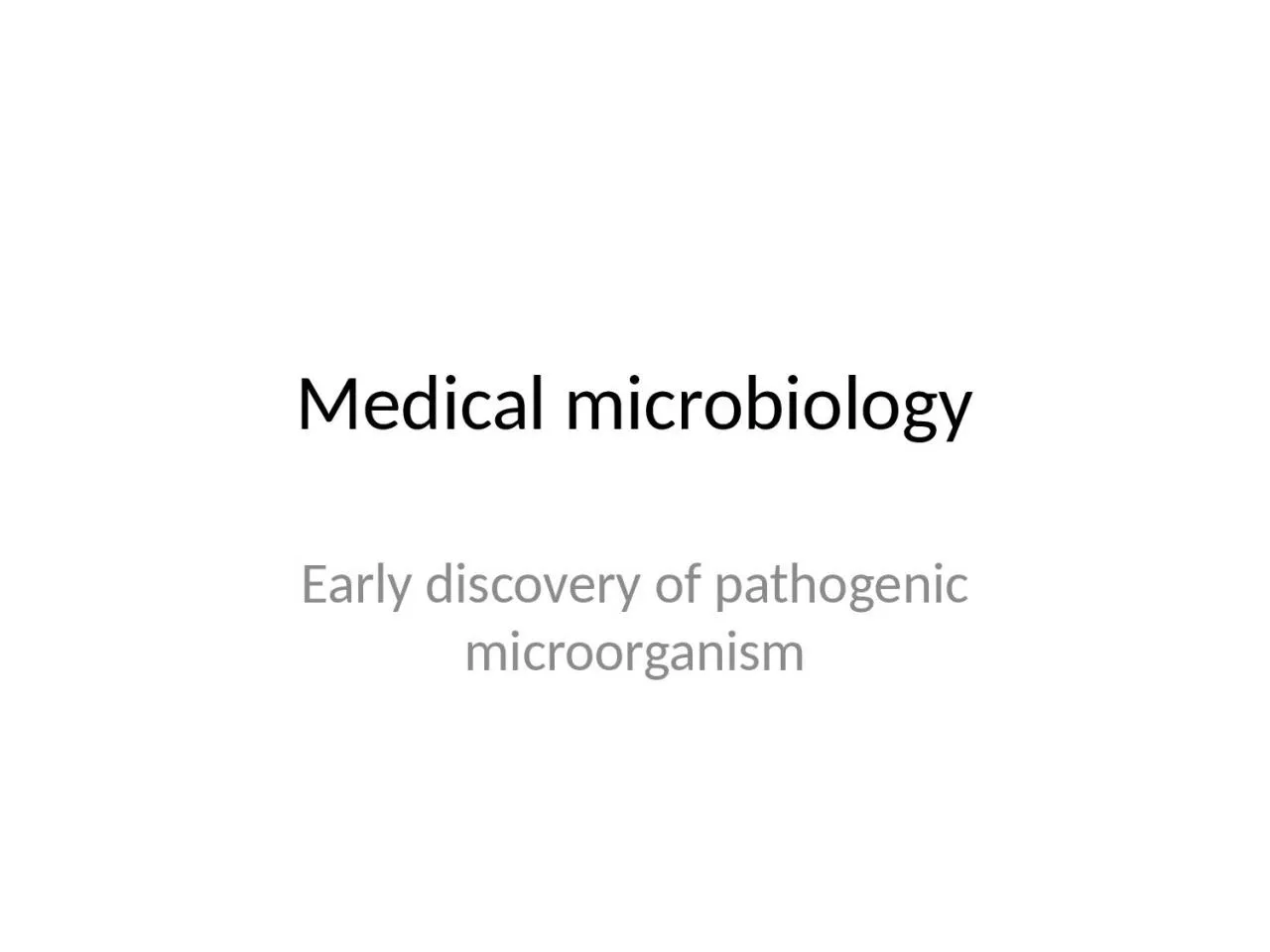

Dutch biologist Anton van Leeuwenhoek in 1674 ground microscopic lenses at a drop of water and discovered a world of millions of tiny animalcules In 1840 the German pathologist Friedrich Henle ID: 998819
Download Presentation The PPT/PDF document "Medical microbiology Early discovery of ..." is the property of its rightful owner. Permission is granted to download and print the materials on this web site for personal, non-commercial use only, and to display it on your personal computer provided you do not modify the materials and that you retain all copyright notices contained in the materials. By downloading content from our website, you accept the terms of this agreement.
1. Medical microbiologyEarly discovery of pathogenic microorganism
2. Dutch biologist Anton van Leeuwenhoek in 1674 - ground microscopic lenses at a drop of water and discovered a world of millions of tiny “animalcules.In 1840, the German pathologist Friedrich Henle proposed criteria for proving that microorganisms were responsible for causing human disease (the “germ theory” of disease).
3. Robert Koch and Louis Pasteur confirmed this theory in the 1870s and 1880s with a series of elegant experiments proving that microorganisms were responsible for causing anthrax, rabies, plague, cholera, and tuberculosis.In 1865 –Pasteur-Silk worm Disease by ProtozoaIn 1860- Joseph Lister –Disinfection of surgical wounds
4.
5. Vaccination1746-Edward Jenner-small pox1880-Pasateur-Cholera
6. The era of chemotherapy began in 1910, when the German chemist Paul Ehrlich discovered the first antibacterial agent, a compound effective against the spirochete that causes syphilis. Alexander Fleming’s discovery of penicillin in 1928, Gerhard Domagk’s discovery of sulfanilamide in 1935, and Selman Waksman’s discovery of streptomycin in 1943. In 1946, the American microbiologist John Enders was the first to cultivate viruses in cell cultures, leading the way to the large-scale production of virus cultures for vaccine development. Thousands of scientists have followed these pioneers, each building on the foundation established by his or her predecessors, and each adding an observation that expanded our understanding of microbes and their role in disease.